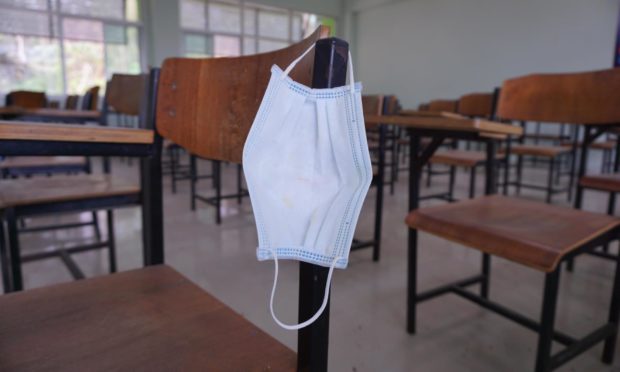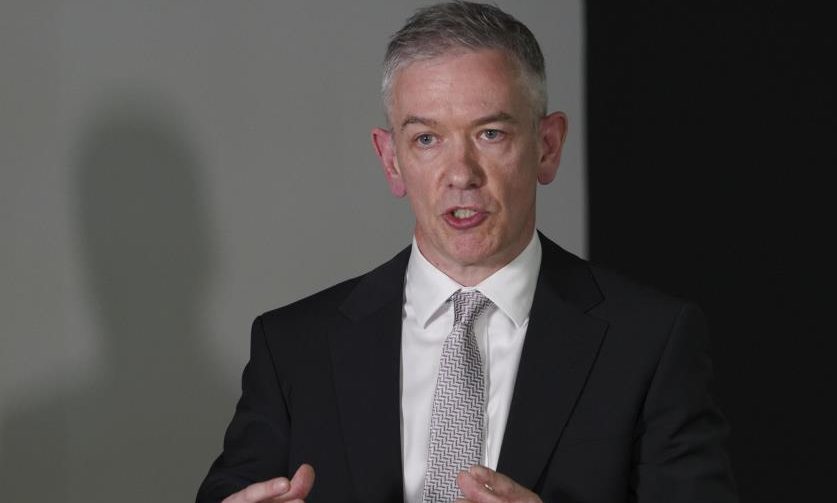Scotland’s chief medical officer insisted there remains no significant transmission of Covid-19 in schools as thousands of Fife and Tayside pupils are absent.
More than 3,500 children missed school on one day alone last week in Angus, Dundee, Fife and Perth and Kinross for Covid-related reasons, almost 1,000 more than did a week earlier.
Interim chief medical officer Dr Gregor Smith said that the number of children infected remained “very small”.
The absences recorded due to the pandemic are mostly for self-isolation, but also include illness and parents refusing to send their children to school.
Dr Smith said the data showed that “schools are not an environment where there is extensive transmission to any extent”.
He said: “In fact ONS data suggests that teachers, people who work within schools, are no more likely to become infected than people of a similar age in other occupations.”
At the Scottish Government’s daily briefing on Monday, he said he was not surprised by absence rates but said the majority were children self-isolating as a result of contact with household members who had tested positive.
Pupils at dozens of schools in Fife and Tayside have been advised to self-isolate due to cases “linked” with their school.
Dr Smith said: “We are not seeing evidence of any significant increased risk with transmission particularly amongst adults within schools.
“When we look at the evidence for children again what we can say is particularly for the younger age group there is not compelling evidence at all of significant transmission between those age groups.
“There is more evidence as children get older but even in those children it tends to be a relatively lower level than in adults.”
Transmission “not non-existent”
He said data tracking would continue but added “at this moment in time there is nothing to suggest in the data that there is any significant impact on safety in schools by their return”.
First Minister Nicola Sturgeon said there was a “relative lack” of transmission within schools but it was “not non-existent”.
As Scotland’s largest teaching union surveys members on industrial action, she said it remained her “objective and intention” to keep schools open even in any areas which move to level four restrictions.
She said: “We know that it does damage to young people not to be in normal schooling.
“Young people have had months out of school already this year and if we can at all avoid it we want to ensure that they don’t have further time out of normal, full-time schooling.”
at this moment in time there is nothing to suggest in the data that there is any significant impact on safety in schools by their return”.
Dr Gregor Smith, interim chief medical officer
The Educational Institute of Scotland said the growing number of infections among pupils and teachers was creating growing safety concerns.
It announced on Friday that it was seeking members’ views on industrial action in response to refusal to move to blended or remote learning at level four.
General secretary Larry Flanagan said: “Our members are increasingly concerned by the week-on-week increase in the number of pupils and staff being infected with COVID-19.
“This, coupled with the increase in the numbers self-isolating, is having a significant impact on education provision and is raising anxiety levels over the effectiveness of safety mitigations in our schools.”
How many absences in Fife and Tayside?
Last Tuesday, 3,539 schoolchildren in the four local authority areas covered by NHS Tayside and NHS Fife were absent for reasons related to coronavirus.
On the same day a week earlier 2,558 were off.
Covid-related absence figures in each of the four council areas on November 10 were:
- Fife – 1,910
- Dundee – 670
- Angus – 570
- Perth and Kinross – 452
In each area the postcode areas with the highest number of absences were:
- Fife – KY1 (332), KY7 (302) and KY8 (287)
- Dundee City – DD4 (236) and DD2 (183)
- Angus – DD11 (224)
- Perth and Kinross – PH2 (207).











